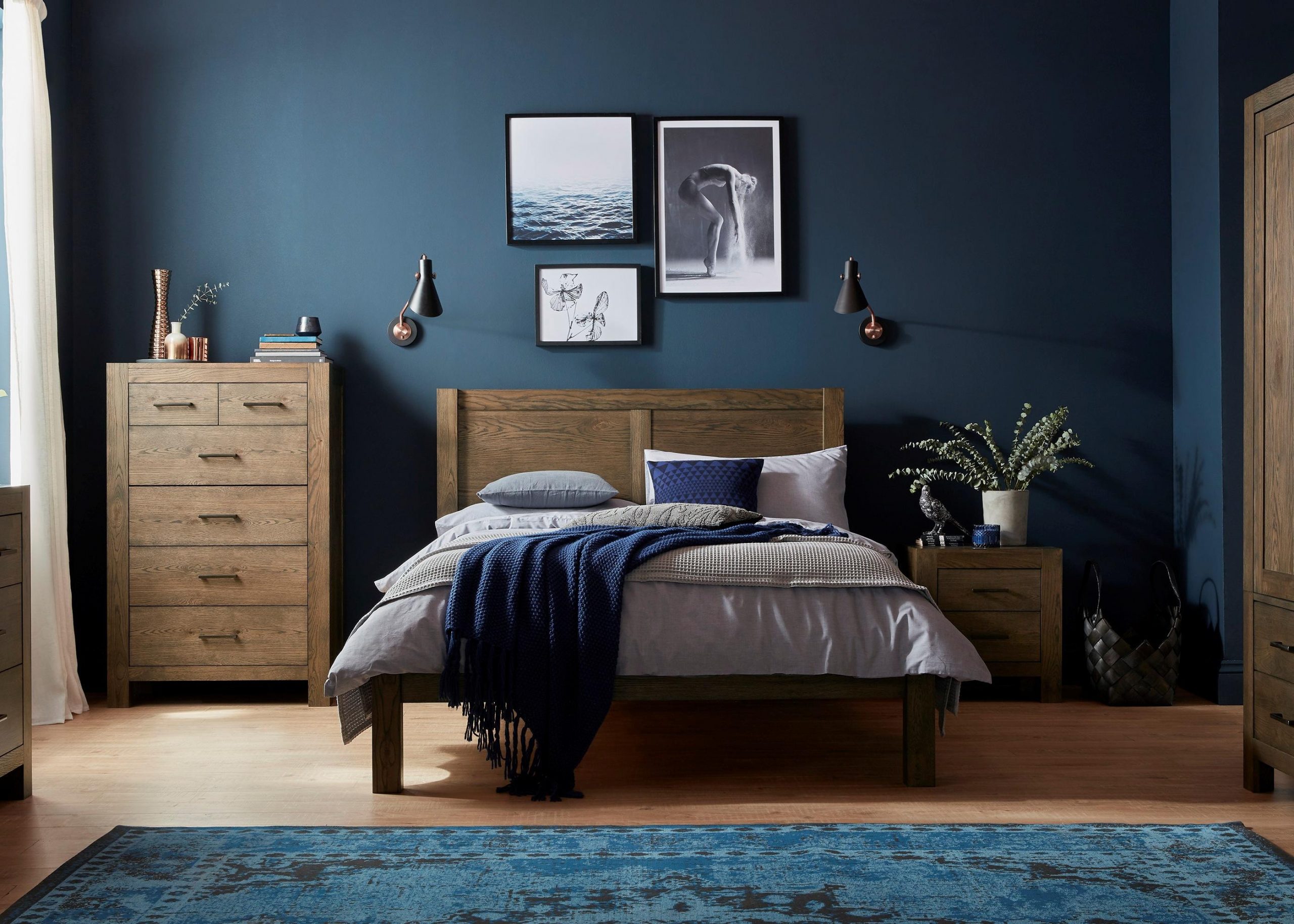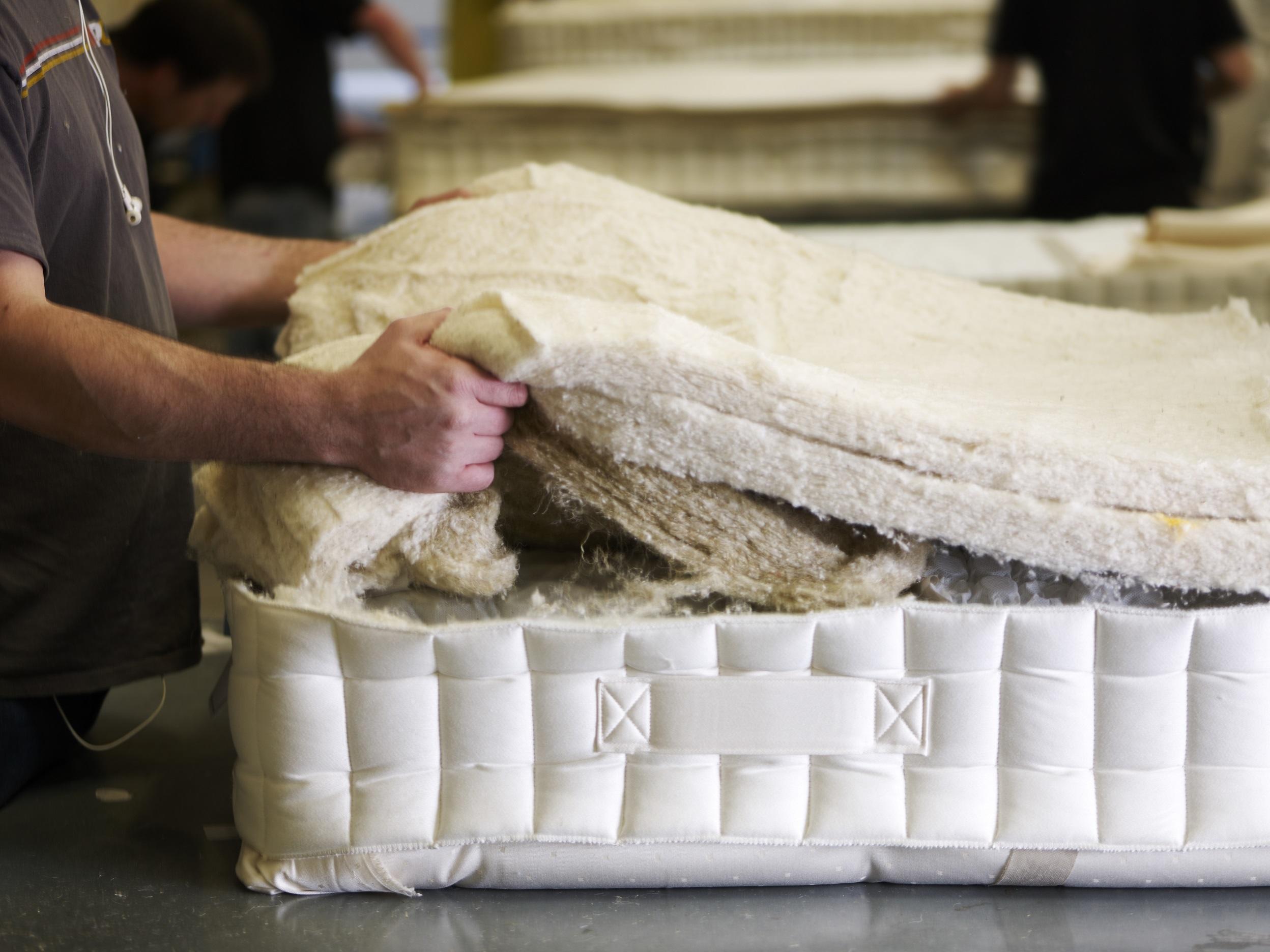How Your Bedroom Interior Can Influence Your Sleep
If you struggle with getting a good night’s sleep and you’ve tried everything, we may have found the problem… your whole bedroom!
A sweet, uninterrupted slumber doesn’t just happen overnight (pun intended), it’s a few simple changes to your interior and getting into a regular routine that can make the most difference.
Textures and Toes
Avoid too much metal or glass in your bedroom, keep things soft and cosy. We suggest placing a fluffy rug to the side of your bed so that the first thing your fresh morning toes will feel is an irresistibly soft sensation. It will certainly make getting out of bed less of a chore.
For curtains and blinds, make sure they do a good job at masking the sunshine, which can often cause sleep to be interrupted. A thick pair of curtains also work well for noise reduction, especially if you live in a busy neighbourhood.
Switch Off
It’s obvious at this point that electronics are a no no for bedtime. But so many of us (4 in 10 people in fact) still love to scroll through our social feeds or get lost on YouTube right before we close our eyes.
While it may seem harmless, the bright light in our faces delays melatonin production, a chemical in our brain that when released into the blood makes us feel sleepier and gets us ready to drift off.
We recommend keeping the electronics off when you step into the bedroom. Dim the lights and let yourself fully submit to sleep (it’ll just mean you have more notifications in the morning, so get ready to feel popular).
Colour Correction
The way our brain interprets colours can be a powerful thing. We see certain shades and this triggers reaction and feelings that even affects our body on a physical level.
According to a sleep study by Travelodge, people who sleep in a blue bedroom sleep much better (and longer) than any other colour of room – 58% of people who sleep in a blue coloured bedroom reported feeling “happy” and refreshed in the morning.
This colour correlates to feelings of calmness, tranquillity and general good vibes.
Other colours that work great for sleep are yellow (symbolises warmth), green (natural and relaxing) and silver tones (reminiscent of moonlight).
Alternatively, the biggest colours to avoid are red, which is generally considered a vibrant colour and can be a distraction for when you want some shut-eye. Purple, in a similar vein, promotes productivity and therefore a lack of calmness.
Finally, avoid grey. This may be difficult as it’s a colour that is so on-trend (and isn’t going anywhere) but grey is seen as dull and dreary for the bedroom, so consider limiting this shade to other rooms in the house.

A Place for Everything
A well-organised bedroom is a huge factor to sleep. Not having to struggle through an obstacle course just to get to your bed is a small way to limit stress. Keep your sleep space clutter-free!
Before you leave the bedroom for a day of working or socialising, try to make your bed and make it, even more, inviting for when it’s time to return.
Maximise storage furniture as much as you can. Choose an ottoman bed to hide away clutter and incorporate multi-drawered pieces into your surroundings for a tidy, neat bedroom where you can actually find what you're looking for.
Scentertainment
Use reed diffusers and scented candles to create a relaxing ambience in your bedroom (make sure you blow them out though!)
Choose your scents wisely as this is vital to helping you sleep. We recommend notes of lavender and bergamot which have calming properties shown to reduce anxiety levels and keep you feel relaxed.
Avoid smells of citrus, which are too vibrant and energetic and therefore are best suited to more communal spaces such as the kitchen or living room.
Your Mattress Matters
Perhaps the most essential part of getting a great night’s sleep is your mattress, which is why it is very important that you have the right one for you.
It’s the inside that counts. Whether it’s filled with natural materials like Harrison Spinks or uses state of the art technology like a Tempur®, read the specifications carefully to ensure that your biggest sleep investment will actually help and not hinder your sleep.
Mattresses usually come in soft, medium or firm tensions and these are suitable depending on your weight, comfort levels or even medical problems (see your doctor for advice for the latter) and having the wrong tension for your body can cause long-term issues.

It's Getting Hot in Here...
Our bodies are great at regulating temperature and there are plenty of mattresses out there that support your body while it does this, from absorbent natural materials to breathable open-cell foam interiors.
If you have a thermostat, we recommend trying to keep your bedroom at 16-18°C for ideal body temperature control. Alternatively, try to keep a cosy throw or small blanket close by in case it gets too hot under the covers during those warmer months or to use as an extra layer for wintertime.
Don't Forget
Try to get your recommended 7-9 hours of sleep every night. Most people only sleep 6.8 hours on weeknights and 7 and a half on weekends (Philips Global Sleep Survey, 2020) but those couple of extra hours can make all of the difference. 34% of Brits sleep between 10:01-11pm and 29% sleep between 11:01 pm-12am (Sleepcouncil.org), so whether you're earlier or later than these, make sure you're getting enough to fully maximise your sleep health.
Don't hit that snooze button, while it's so tempting, try to get up as soon as your alarm rings. You could actually be tricking your brain into thinking it needs to undergo another sleep cycle and therefore giving you more of that groggy feeling in the morning.
Stay up to date with the latest trends, sales, competitions and more by following our social media pages:



